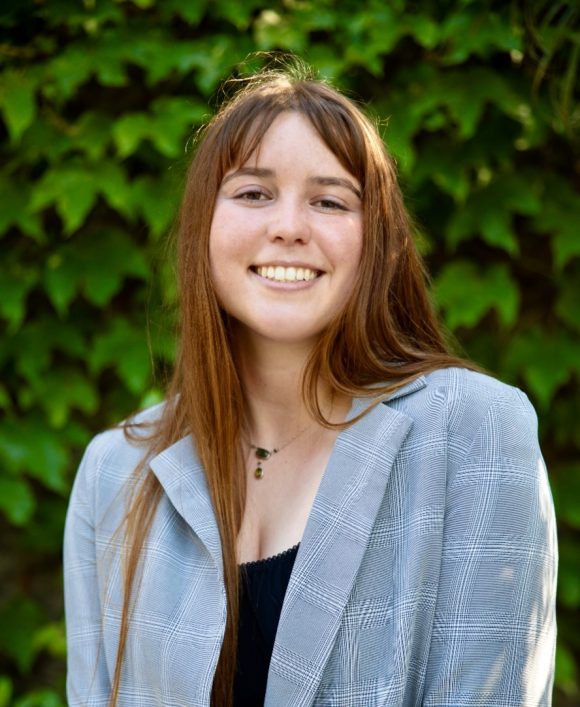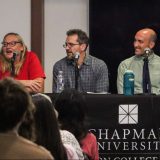
Mapping Environmental Injustice: Wilkinson Student Takes First Place
August 19, 2021
Recent graduate, Mallory Warhurst (’21) was awarded first place in the Environmental Systems Research Institute (ESRI) Spatial Thinking Student Competition in the communication category with her story map, A Hostile Long Beach.
The Political Science and Environmental Science & Policy double-major came up with the idea for her project in Spring 2020, just as students across the nation were shifting to online learning as a result of the pandemic. Warhurst was taking Dr. Georgiana Bostean’s (Associate Professor, Sociology; Environmental Science, Health, and Policy) course in Geographic Information System (GIS) learning how to design, capture, analyze, and present all types of geographical data.
“The course is intended to stimulate students’ understanding of “the environment” as being broadly defined, to include not only the natural environment, but the physical (including built) environment, and the social environment,” said Bostean.
“I was honestly doing a lot of walking around in my hometown [in Long Beach] because there wasn’t much else to do,” said Warhurst. “As I was walking around, I was noticing the intense presence of hostile architecture all around the city. I started looking into hostile architecture more and noticed that public records, documentation, discourse, anything about these features in Long Beach were essentially nonexistent. I thought it was something that deserved to be spoken about and I thought that a GIS story map would be a really powerful tool in communicating this reality as well as hostile architecture’s relationship to other elements of society.”
After submitting the project for her class, Bostean suggested she enter the ESRI Spatial Thinking Student Competition. “Mallory chose an important and timely topic– hostile architecture– to study as part of her work in my Introductory Geographic Information Systems (GIS) course, and her passion really shone through in the final product. She went well beyond course requirements, collecting a substantial amount of GIS data throughout Long Beach to incorporate into her StoryMap, and supplementing the main analyses with both historical maps and contemporary contextual data to make a strong argument about the historical roots of social inequality. When I learned of the competition, I immediately thought of her StoryMap and encouraged her to apply,” said Bostean.
There were 12 finalists chosen and three winners, one for each category in Data Science, Spatial Thinking, and Communication. Warhurst’s story map focused on the importance of effectively communicating geospatial relationships and statistics.
Warhurst’s Story Map on Hostile Architecture brings to light the social and historical underpinnings of an element of our daily lives (public architecture and design) that many of us might otherwise walk past without much thought. According to Dr. Bostean, “Her story highlights how design choices impact populations in uneven ways, and importantly, traces the historical reasons why we see the patterns of social inequality that exist today, which are indeed social justice issues. [Wilkinson’s] Engaging the World series on Environmental Justice will be a great way to bring such social and humanistic perspectives to understanding (and changing) the environment, broadly.”
“This project was so transformative for me,” Warhurst said. “I learned so much about the power of GIS and storytelling. I was able to convey the intertwined reality of place and injustice in my hometown and use an extremely accessible and interactive platform to communicate the importance of an issue I deeply care about. I will never shut up about how much I love GIS and Long Beach and storytelling. I would love to continue to make story maps for the rest of my life.”
Warhurst is currently working for an organization in Oakland, California called Acta Non Verba (ANV). They run multiple urban farms in the surrounding community that allows people to have direct relationships with food systems and access to nutritious food. She is helping run the ANV after-school program where she and her students “farm and do science, art, and more,” she said.


